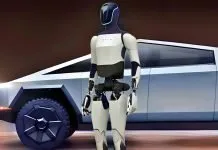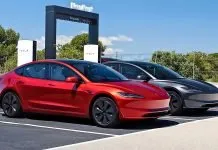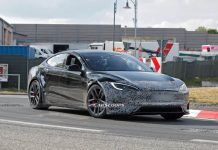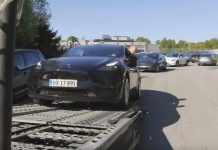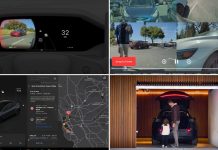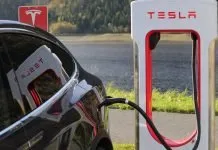Subsidies And Incentives Bridging the Gap?
Climate change indeed is a pressing issue that needs our urgent attention, but we often see EVs as a cheaper mode of communication than as a potential solution to a greener tomorrow. Nevertheless, EVs have gained popularity due to their ability to reduce greenhouse gas emissions and dependence on fossil fuels.
Elon Musk’s amusing tweets, government benefits, and subsidies do add up to the push to go electric. But, still, not everyone can save so much by adopting EVs. Why?
Early this year, a study from the University of Michigan said that more than 90% of American households that own vehicles could benefit financially and environmentally by switching to EVs.
However, there is a catch.
Well, it turns out low-income Americans may face a tad bit of difficulties in this transition, which could worsen the existing economic gap.
In this blog post, we explore the potential challenges faced by low-income Americans in adopting EVs, circling the importance of inclusive policies for equal access to EVs.
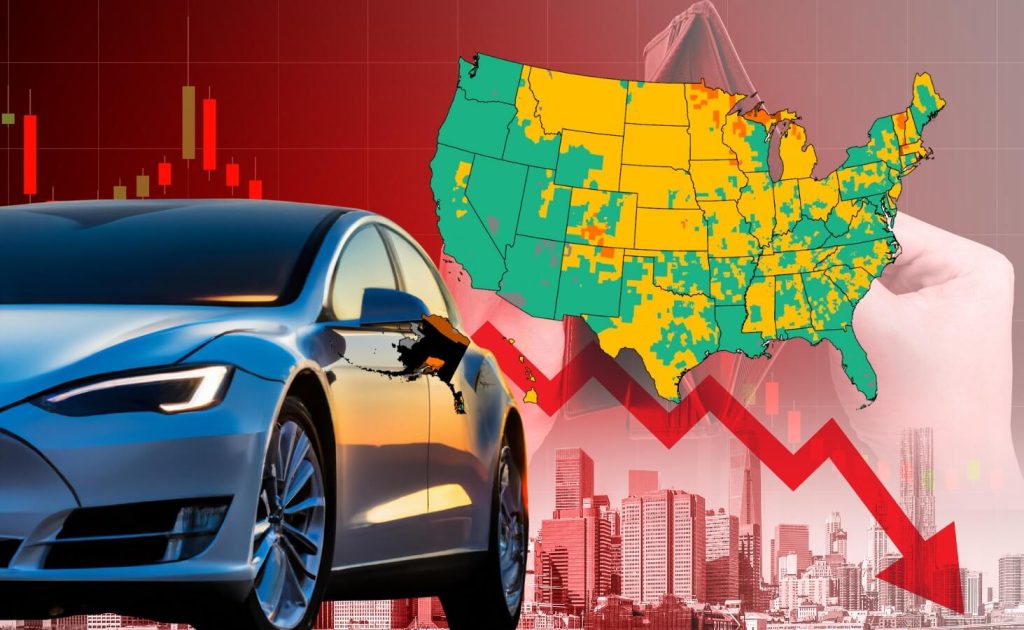
Table of Contents
The University of Michigan Study on EV Transition
The study reveals that the switch to electric vehicles brings great benefits to the American West and parts of the Northeast. These regions see a significant decrease in greenhouse gas emissions from transportation, thanks to factors like cleaner electricity grids, lower electricity prices, and less impact on fuel usage due to shorter drives and milder temperatures. However, it is troubling to learn that over half of the lowest-income households still face high costs for using electric vehicles.
According to the University Of Michigan study, currently, EVs make up only about 1% of all cars. SUVs, sedans, pickups and all flying on American soil. However, if you replace these with new EVs, the study found that the results would differ greatly across regions.
The greatest reductions in energy usage and emissions would occur on the West Coast and in parts of the Northeast. This is because these areas have cleaner energy sources and lower electricity prices.
People living there could potentially save over $600 each year in transportation energy costs and reduce their carbon footprint by more than 4.1 metric tons of carbon dioxide equivalents by switching to an EV.
Unfortunately, the benefits are not as significant for lower-income households in other parts of the country.
The study revealed that these households would still face high energy burdens from EV transportation, ranging from 10% to 64%. The Midwest region, as well as Hawaii and Alaska, would have the highest burdens due to higher electricity prices in those areas.
Around 8% of US households, which is roughly 9.6 million households, would experience low savings in both energy burden and greenhouse gas emissions by switching to an EV.
The study also highlighted a concerning fact: The lowest-income households would continue to face the highest energy burdens for transportation. Almost all households with incomes below 30% of the local median would experience moderate to high energy burdens from EVs.
These homes are spread throughout the country, with a significant portion located in Midwest states like Michigan. Factors such as cold winter temperatures affecting battery performance, reliance on fossil fuels in the local electricity grid, and relatively higher electricity prices compared to gasoline contribute to these low savings.
How All Income Groups Could Adopt EVs?
The release of the University of Michigan study in January 2023 on the impact of EVs on household income brought forth an interesting observation about media coverage.
Most major media outlets locked onto a generic fact from the research, emphasizing how households would benefit from EVs. Whereas the original headline shed light on a different aspect of the study—one that digs into the hidden economic division within the United States.

The University of Michigan’s study highlighted the possible benefits of the EV shift for the majority of automobile owners in the country but raises concerns about the lowest-income Americans potentially being left behind.
Ah, the nuances of media coverage!
While numerous media outlets did manage to slip in a line about the continued high EV transportation energy burdens for the lowest-income households, it seems that the importance of making EVs accessible to everyone remains a bit distant for them.
But here’s the thing: This nuance is crucial in understanding the gaps in the transition to transportation electrification. It tells us that while the overall benefits of EV adoption are touted, there is a clear divide, with the lowest-income Americans potentially left behind.
Fortunately, there is some momentum building toward establishing this equitable future. Initiatives are being developed to address the challenges faced by low-income households, ensuring that they too can participate in the EV adoption.
Here’s what the report points out to bridge the gap!
Subsidize Charging Infrastructure
To ensure energy justice in lower-income communities, it is crucial to implement targeted policies that address the specific needs and challenges faced by these communities. One such policy recommendation is subsidizing charging infrastructure, as it can significantly improve access to EV charging for residents in these communities.
Energy justice thinkers have also proposed incentives for both new and used vehicles, with particular stress on measures going beyond taxes. Programs like California’s Enhanced Fleet Modernization Program, which specifically targets low-income households, can be instrumental in promoting EV adoption.
It is essential to increase access to residential or more affordable public charging options, especially for renters, households in multi-family dwellings, lower-income households, and those living in rural areas.
Electricity Costs
To effectively reduce electricity costs and maximize the benefits of EVs, it is crucial to employ strategic approaches tailored to different regions. In areas where moderate to high energy burden savings are achievable but have limited potential for greenhouse gas (GHG) savings, the emphasis should be on implementing grid decarbonization policies.
By transitioning to cleaner sources of electricity, these regions can significantly reduce their carbon footprint while ensuring that the energy burden on households is alleviated.
For instance, implementing incentives for rooftop solar installations alongside EV incentives can yield promising outcomes in terms of reducing carbon intensity and electricity prices, particularly benefiting low and moderate-income households.
By working to reduce electricity costs, these regions can create a more conducive environment for EV adoption and usage. However, it is important to recognize that certain areas require a combination of both types of policies to maximize the benefits of EVs.
Low-Carbon Transport
To make a real difference in reducing energy burdens and achieving eco-friendly transportation, we need to offer more options for sustainable travel. Electric vehicles are vital, but they alone might not be enough to cut down on emissions from passenger transport.
Investing in transportation modes like buses, bikes, and walking paths would improve the infrastructure for these alternatives.
This could lead to a 20% to 50% reduction in emissions by 2050. It’s also important to remember that we need to focus on solutions that come from the demand side, like building denser communities and encouraging people to change how they travel.
Relying too much on electric vehicles could create unfair situations, like being stuck with car-centric infrastructure and not enough funding for public transportation.
By diversifying our approach and investing in a wide range of low-carbon transport options, we can create a transportation system that is fairer and more sustainable for everyone.
What to Expect in the Future?
Transition to electric vehicles cannot happen overnight and would require push and efforts from automakers as well as blue-collar people.
It appears that major media outlets might shy away from amplifying the true essence of this study. Perhaps the idea of scrutinizing EV energy costs through the lens of distributive justice, which focuses on the fair distribution of benefits and burdens, is just too controversial for their taste.
Nonetheless, this study stands as the first of its kind to explore the EV energy burden for the entire United States, providing a thorough understanding of the challenges faced by different income groups.
Also, it takes into account the spatial variation of both EV energy costs and greenhouse gas emissions across the country.
Greg Keoleian, director of the University of Michigan Center for Sustainable Systems, aptly speaks about the whole ordeal.
The analysis reveals that factors like future grid decarbonization, fuel prices, and charging accessibility plays significant roles in determining the extent to which the benefits of EVs are realized.
It is clear that this study breaks new ground, emphasizing the need for informed policy decisions and collaborative efforts to ensure an equitable and sustainable future for transportation.
Notably, the researchers did not include the vehicle purchase cost in their calculations. However, it is worth mentioning that the Center for Sustainable Systems is currently conducting a separate study that specifically examines the total cost of ownership of EVs.
Returning to the analysis at hand, the researchers compared the energy burdens of the newly assessed vehicles to those of the existing on-road vehicle stock, providing valuable insights into the potential impact of EV adoption on reducing energy burdens.
Moreover, by comparing the spatial variation and extent of energy burdens and greenhouse gas emissions between EVs and internal-combustion vehicles across the United States, this study contributes to a more comprehensive understanding of the regional dynamics of transportation.
Bottomline
The University of Michigan study provides a critical understanding of the nitty-gritty of transitioning to EVs in the United States. They looked at how much energy is used and greenhouse gases are produced by different types of vehicles at a detailed level.
They found differences in benefits to lower income groups but they found that EVs can have benefits, but they didn’t consider how much the cars cost to buy.
The study also showed that there are differences in energy use and emissions across different parts of the country. More research is being done to understand the overall costs of owning an EV.
Transportation is responsible for the majority of greenhouse gas emissions in the United States, and about 16% of these emissions come directly from passenger vehicles and light-duty trucks. To combat this issue, the primary solution being considered is electrification.
This study can help policymakers make decisions to create fair and environmentally friendly transportation systems for everyone to enjoy better scope for electric adoption.

